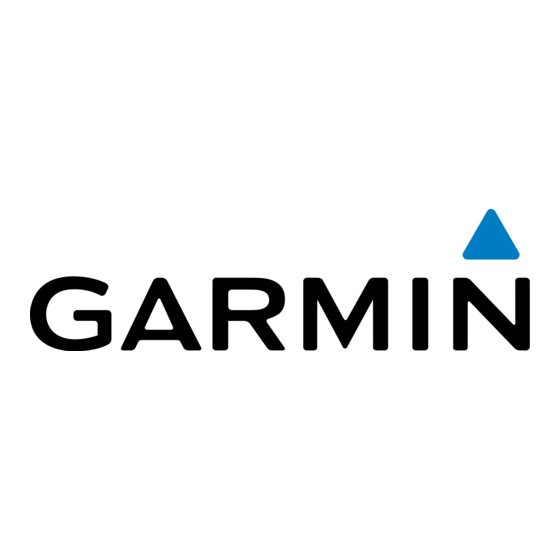Garmin GHP 10 Marine Autopilot System Installation Instructions Manual - Page 21
Browse online or download pdf Installation Instructions Manual for Marine GPS System Garmin GHP 10 Marine Autopilot System. Garmin GHP 10 Marine Autopilot System 26 pages. Tachometer reference
Also for Garmin GHP 10 Marine Autopilot System: Quick Start Manual (21 pages), Installation Instructions Manual (48 pages), Technical Reference (42 pages), Declaration Of Conformity (1 pages), Reference (1 pages)

Category
Setting
Rudder Gains
High Speed
Gain
Rudder Gains
High Speed
Counter
NMEA Setup
NMEA
Checksum
NMEA Setup
Reversed XTE If the connected NMEA 0183
Navigation Setup
Navigation
Gain
Navigation Setup
Navigation
Trim Gain
GHP 10 Installation Instructions
Description
Allows you to set the rudder
gain for high speeds.
This setting applies to the
vessel when operating above
planing speed.
If you set this value too
high, the autopilot may be
overactive, attempting to
constantly adjust the heading
at the slightest deviation.
An overactive autopilot can
cause excess wear and tear
on the drive unit
(page
17).
Allows you to set the rudder
gain counter-correction for
high speeds.
This setting applies to the
vessel when operating above
planing speed.
If you set this value too
high, the autopilot may be
overactive, attempting to
constantly adjust the heading
at the slightest deviation.
An overactive autopilot can
cause excess wear and tear
on the drive unit
(page
17).
If the connected NMEA
0183 GPS unit incorrectly
calculates checksums, you
may still be able to use it
if you turn this setting off.
When set to off, data integrity
is compromised.
GPS unit sends the incorrect
steering direction with the
cross track error signal. You
can use this setting to correct
the steering direction.
Allows you to adjust how
aggressively the autopilot
eliminates cross-track error
while following a Route-To
pattern.
If this value is too high, the
autopilot can oscillate back
and forth across the course
line over long distances.
If this value is too low, the
autopilot may respond slowly
in eliminating cross-track
error.
Allows you to adjust the
acceptable amount of long
term cross-track error while
following a Route-To pattern.
Only adjust this setting after
the navigation gain has been
set.
If this value is too high, the
autopilot will overcompensate
for cross-track error.
If this value is too low, the
autopilot will allow a large
long term cross-track error.
Category
Setting
Steering System
Verify Steering
Setup
Direction
Steering System
Lock-to-Lock
Setup
Turns
Steering System
Helm
Setup
Displacement
Steering System
Linkage
Setup
Compensation
NOTE: Advanced configuration settings are available when using
the advanced configuration procedure
available during normal operation of the GHP 10. See the configuration
section of the GHC 10 Owner's Manual for more information.
Description
This setting tells the autopilot
which direction the rudder
must move to turn the vessel
to port and to starboard.
You can test and reverse
the steering direction if
necessary.
Allows you to adjust the
number of turns it takes
your helm to go from lock to
lock (fully turned port to fully
turned starboard).
Allows you to calibrate helm
displacement.
Allows you to adjust the
linkage compensation if the
steering is loose or sloppy.
The higher you set this
value, the more the autopilot
compensates for loose or
sloppy steering. Use this
setting with caution.
(page
17). Other settings are
21
